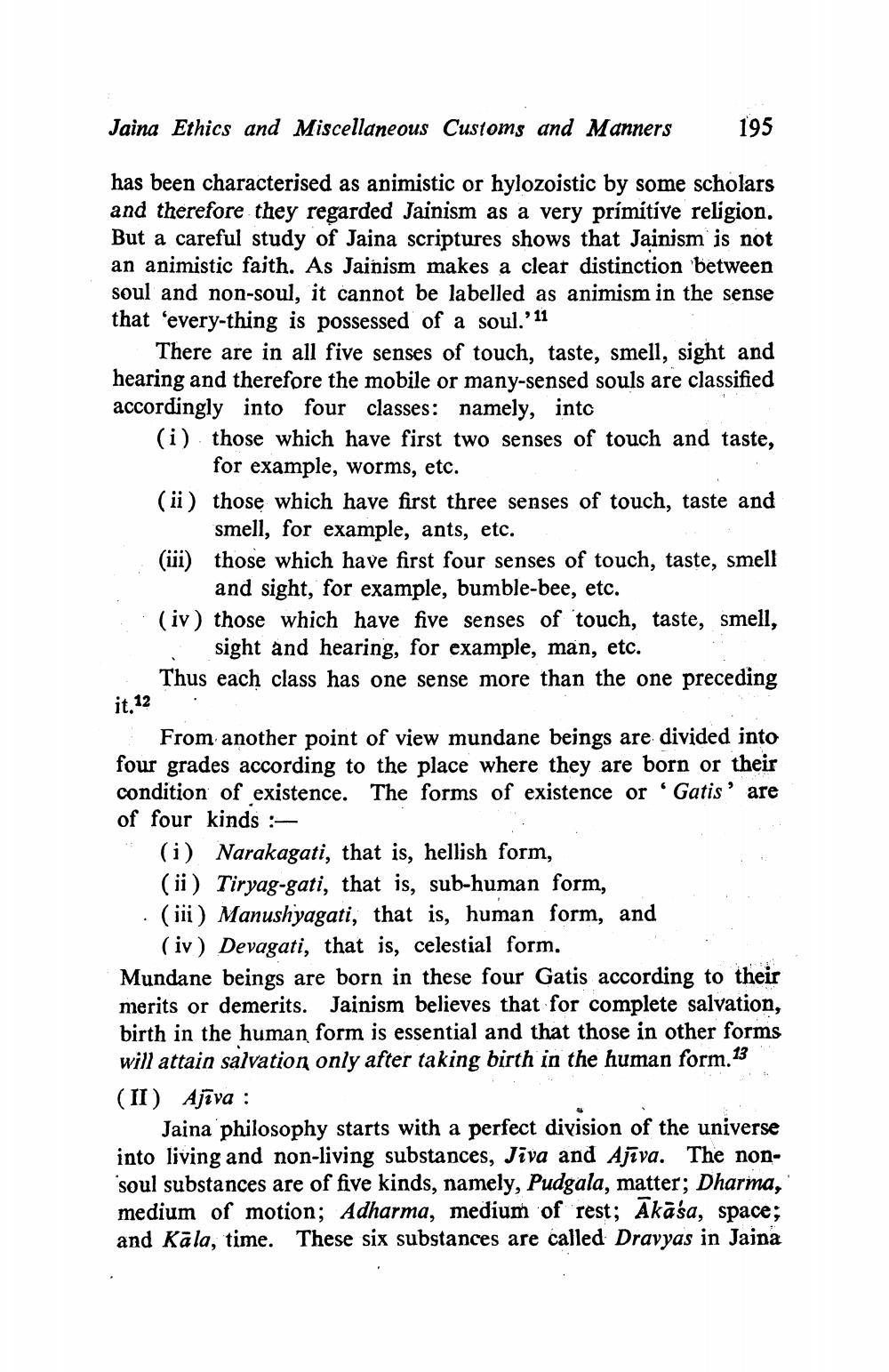________________
Jaina Ethics and Miscellaneous Customs and Manners
195
has been characterised as animistic or hylozoistic by some scholars and therefore they regarded Jainism as a very primitive religion. But a careful study of Jaina scriptures shows that Jainism is not an animistic faith. As Jainism makes a clear distinction between soul and non-soul, it cannot be labelled as animism in the sense that 'every-thing is possessed of a soul.' 11
There are in all five senses of touch, taste, smell, sight and hearing and therefore the mobile or many-sensed souls are classified accordingly into four classes: namely, intc (i) those which have first two senses of touch and taste,
for example, worms, etc. (ii) those which have first three senses of touch, taste and
smell, for example, ants, etc. (iii) those which have first four senses of touch, taste, smell
and sight, for example, bumble-bee, etc. (iv) those which have five senses of 'touch, taste, smell,
sight and hearing, for example, man, etc. Thus each class has one sense more than the one preceding it.12
From another point of view mundane beings are divided into four grades according to the place where they are born or their condition of existence. The forms of existence or 'Gatis' are of four kinds :
(i) Narakagati, that is, hellish form,
(ii) Tiryag-gati, that is, sub-human form, . (iii) Manushyagati, that is, human form, and
(iv) Devagati, that is, celestial form. Mundane beings are born in these four Gatis according to their merits or demerits. Jainism believes that for complete salvation, birth in the human form is essential and that those in other forms will attain salvation only after taking birth in the human form.13 (II) Ajīva :
Jaina philosophy starts with a perfect division of the universe into living and non-living substances, Jiva and Ajīva. The nonsoul substances are of five kinds, namely, Pudgala, matter; Dharma, medium of motion; Adharma, medium of rest; Akāśa, space; and Kāla, time. These six substances are called Dravyas in Jaina




